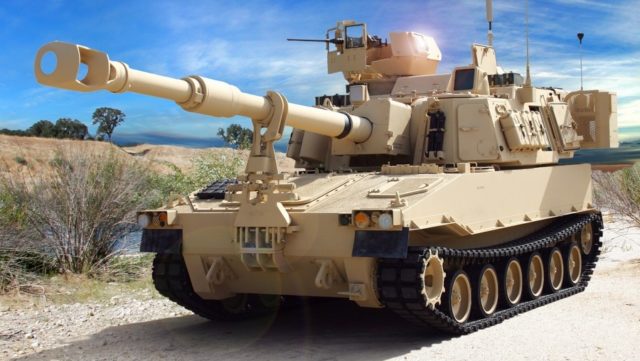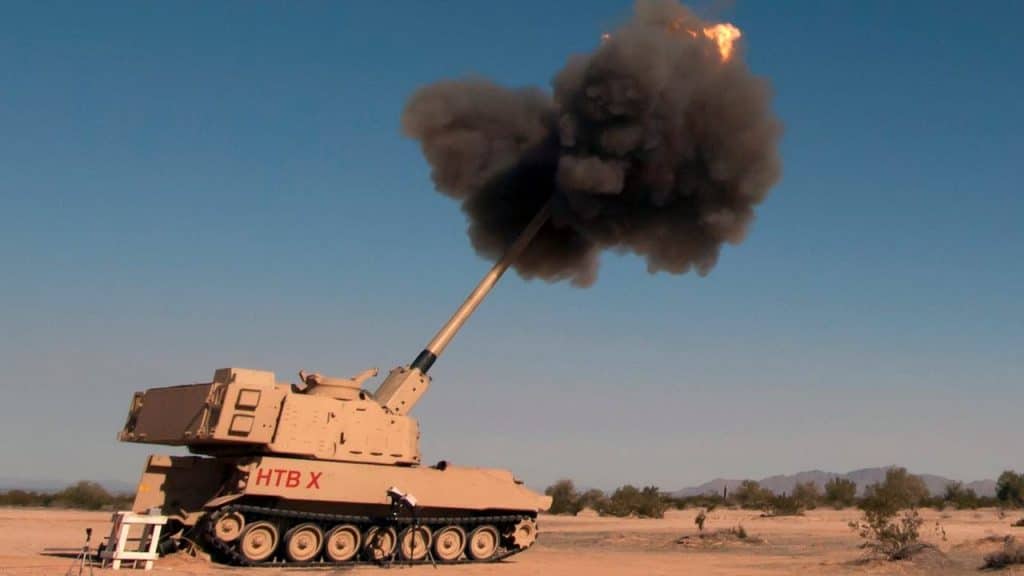In the near future, the American Army wants to conduct a serious operational test of the extended range artillery system: the Extended Range Cannon Artillery (ERCA), equipped with the XM907 / M907 gun mounted in the new XM208 mount. The test will help answer a few questions, in particular, whether the defect that appeared in early prototype tests and indicated excessive wear of the gun barrel after firing a relatively small number of rounds was resolved.
“The new ammunition is as much a challenge to the program as it is to the weapons system,” said Doug Bush, US Army purchasing chief, during an interview with Defense News at the Association of the United States Army 2022 exhibition in Washington. “ We’ll know a lot more when we actually run the tests and then move on to an operational assessment of how long is required between maintenance – reliability in principle.
The US Army is in the process of complex construction of twenty ERCA system prototypes. Two will be used for ballistic and anti-mine resistance tests of the hull, and the remaining eighteen will go to the 4th Battalion of the 27th Field Artillery Regiment. The first two guns were delivered by October 2021. The set of artillery units is to be available by the end of the fourth quarter of fiscal year 2023. The battalion will conduct an operational assessment that will contribute to the development of guidelines for full-scale production, implementation and maintenance of howitzers in service. The evaluation is expected to take a year.
ERCA systems are built in several different locations, including the New York-based Watervliet Arsenal, where the barrels are manufactured. The final integration is taking place at Picatinny Arsenal in New Jersey. They are then transported to the Yuma Proving Ground in Arizona for testing. According to official information, the process of assembling artillery units is proceeding as planned. This means that all twenty prototypes will be built in less than three years.

ERCA demonstrated at the Yuma training ground.
(US Army / Ana Henderson)
But not everything goes smoothly, as the desired barrel quality has still not been achieved. Work is still ongoing during production at Watervliet to achieve the target characteristics. Many problems were caused by replacing the barrel with a length of 39 to 58 calibers (the chassis of the M109A7 Paladin Integrated Management howitzer is used), which resulted in a 49% increase in its length. The new barrel is 450 kilograms heavier and 1.83 meters longer than its predecessor.
Therefore, it has become necessary to study how this element deals with new propellants and new projectiles, as well as how it behaves under operational conditions. Additionally, the barrel structure was strengthened to withstand higher pressures.
“It’s not something you do on day one, it’s a process,” Bush said. “So far we believe that the technology fixes and technical fixes we can make can fix the issues, but it’s too early to say this for sure.
The ERCA program aims to improve the characteristics of the M109A7 set. To make this possible, the M284 cannon with an L39 barrel (39 caliber long) was replaced with a prototype L58 barrel turret. The new barrel is approximately 450 kilograms heavier and 1.83 meters longer than its predecessor. Optimistic plans assume that by 2023 the squadron will enter service – eighteen XM1299 cannon howitzers (which will be designated M109A8 in service). They will be deprived of an automatic loading mechanism, which will be installed in later copies, which will allow to increase the rate of fire up to 10 rounds per minute and reduce the number of the crew.
Until recently, the ERCA program was seen as a stepping stone to the development of a new Strategic Long Range Cannon. In principle, it was supposed to hit targets at a distance of 1,852 kilometers. In May, this program ended up in the trash.

The M109A7 prototype.
(PIM)
In December 2020, the XM1299 self-propelled howitzer prototype was successfully tested, which fired three M982A1 Excalibur missiles at a target 70 kilometers away. In turn, during the tests in March 2020, four missiles were fired: two Excaliburs and XM1113 RAP (Rocket-Assisted Projectile) with an additional rocket propulsion. At that time, it was possible to achieve “only” 65 kilometers. In addition to these two types of ammunition, the M1299 will fire sub-caliber or jet engine shells with an even greater range. It is assumed that this will allow reaching a range of 120 to 150 kilometers.
Interesting solutions for artillery also come from a different angle and may be a challenge for the ERCA or become a significant supplement to them. On October 12, Gary Hopper, vice president of General Atomics-Electromagnetic Systems (GA-EMS), announced the development of a new Long Range Maneuvering Projectile (LRMP) missile for the standard 155mm howitzer. This would not be of interest if the winged missile had not been designed to achieve the same range as Nammo’s proposed jet engine missile for the ERCA system.
155 mm Solid Fuel RamJet #Nammo # Eurosatory2018 IOC 2023 pic.twitter.com/hvMPb45Ogq
– Pertti Immonen (@PerttiJImmonen) June 12, 2018
Test shooting is scheduled to begin next week, which will be the first opportunity for the LRMP to showcase flight characteristics and capabilities. A standard 155-millimeter bullet leaves the barrel of the howitzer at a rotational speed of about 200 revolutions per second. The six fins on the LRMP are designed to slow down the spin to around 20 revolutions per second. The LRMP is expected to achieve a maximum range of approximately 150 kilometers. The volume will be achieved with a standard barrel with a length of 39 calibers.
Coming back to the ERCA case, it should be said that the technique and parameters (including those for missiles) are one thing, but the US Army also faces the challenge of refining and practicing the tactics of using subunits equipped with M109A8 artillery units. They are assigned the task of fighting the enemy’s armored weapons, and the expansion of the range makes it possible to destroy single tanks or other combat vehicles at much greater distances.
This made it possible to extend the Position Areas for Artillery (PAA) to an area of 16 square kilometers, which were defined by the 1st Artillery Division. ERCA will also use the WIN-T Increment 2 (Warfighter Information Network – Tactical) communication system, a long-range computer wireless network that will allow it to communicate more effectively, especially in mountainous areas. This system is based on HMMWV high-mobility wheeled vehicles, MRAPs and Stryker wheeled armored personnel carriers.
See also: The submarine program for Thailand has run aground
US Army
US Army

